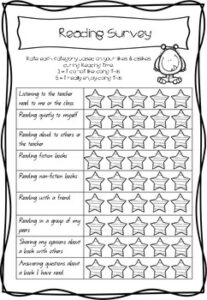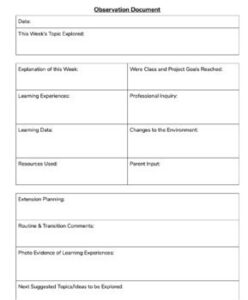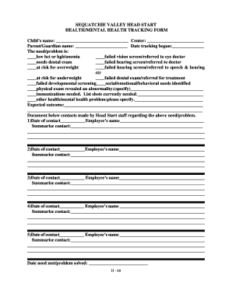Embarking on the journey of early literacy education often brings us face-to-face with the varied needs of young learners. For educators dedicated to supporting children who are struggling with reading and writing, programs like Reading Recovery offer invaluable frameworks. A cornerstone of this approach, and indeed any effective literacy intervention, is a thorough understanding of a child’s current reading and writing behaviors, which is precisely where a robust observation survey comes into play.
Think of an observation survey as your detective toolkit, helping you uncover the specific strengths and challenges a child possesses. While the official Reading Recovery Observation Survey is a copyrighted instrument, many educators find themselves needing to create or adapt their own tools to systematically gather this critical information. That’s where the idea of a comprehensive reading recovery observation survey template becomes incredibly useful, providing a structured way to assess and track progress.
Understanding the Core Components of an Observation Survey for Early Literacy
When we talk about observing a young reader, we’re not just looking at whether they can say words correctly. It’s a much deeper dive into their understanding of print, their strategies for decoding, and their developing literacy skills. The goal of an observation survey is to paint a detailed picture of a child’s reading and writing behaviors at a specific point in time, helping educators make informed decisions about targeted instruction. It’s about diagnosing where a child is, not just giving them a grade.
A good observation survey typically breaks down literacy into several key areas, allowing you to pinpoint exactly what a child knows and what they need to learn next. This diagnostic approach is what empowers educators to provide truly individualized support, moving beyond guesswork to data-driven strategies. It’s an invaluable tool for understanding the nuances of early literacy development.
Each component of the survey serves a specific purpose, revealing different facets of a child’s interaction with print. For instance, knowing a child’s letter identification skills is foundational, but understanding how they use “concepts about print” (like knowing which way to hold a book, or what a word is) tells you about their emergent understanding of how print works. Similarly, seeing how they tackle an unknown word in text versus in isolation provides different insights into their problem-solving strategies.
Ultimately, the results from such a survey aren’t just numbers; they are a narrative about a child’s literacy journey. They help us answer questions like: Does this child rely heavily on visual cues, or do they struggle with sounding out words? Do they understand sentence structure? Can they segment words into sounds for writing? All these pieces come together to guide our teaching.
Key Areas Assessed
- Letter Identification: Recognising and naming individual letters, both uppercase and lowercase.
- Concepts About Print: Understanding the conventions of print, such as directionality, words vs. letters, and punctuation.
- Word Reading: Assessing a child’s ability to read words in isolation, often from a graded word list.
- Writing Vocabulary: Evaluating the range of words a child can write independently.
- Hearing and Recording Sounds in Words: Determining a child’s phonemic awareness and ability to represent sounds in writing.
- Text Reading Level: Assessing a child’s ability to read and comprehend continuous text at various difficulty levels.
Crafting and Utilizing Your Observation Survey Template Effectively
Having a standardized reading recovery observation survey template is a game-changer for consistency and efficiency in your assessments. Instead of reinventing the wheel every time you need to evaluate a student, a well-designed template ensures that you cover all critical areas systematically. This not only saves you time but also makes it much easier to compare a student’s progress over time or to discuss their needs with colleagues, because everyone is working from the same framework.
When you’re putting together or choosing your template, think about clarity and usability. A good template should have a logical flow, with clear sections for each subtest and ample space for both quantitative scores and qualitative notes. Remember, the “why” behind an answer is often as important as the answer itself. Does the child self-correct? Do they appear frustrated? These observations are vital to include.
The practical application of your template involves more than just filling in boxes. It’s about creating a comfortable environment for the child, being a keen observer, and knowing how to administer each component of the survey accurately. For instance, when assessing concepts about print, you’re observing how the child interacts with a book, not just asking them to define terms. Similarly, during text reading, you’re paying close attention to their strategies for decoding unknown words, their fluency, and their comprehension.
Once your template is filled out, the real work of interpretation begins. The data gathered from your reading recovery observation survey template should directly inform your instructional plan. If a child struggles with hearing sounds in words, your focus might shift to phonemic awareness activities. If they know many words in isolation but struggle in context, you might prioritize strategies for reading continuous text. The template isn’t the end goal; it’s the beginning of a tailored, impactful teaching approach designed to help each child unlock their full literacy potential.



